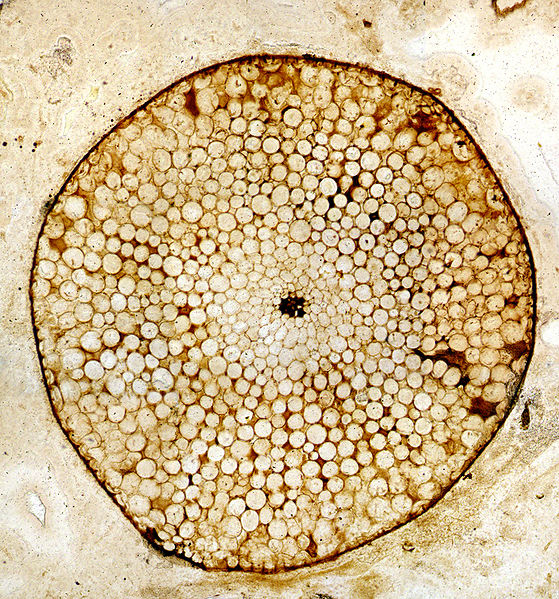Lepidocaris rhyniensis is an extinct species of crustacean. It is the only species known from the order Lipostraca, and is the only abundant animal in the Pragian-aged Rhynie chert deposits. It resembles modern Anostraca, to which it is probably closely related, although its relationships to other orders remain unclear. The body is 3 mm (0.12 in) long, with 23 body segments and 19 pairs of appendages, but no carapace. It occurred chiefly among charophytes, probably in alkaline temporary pools.
Lepidocaris
Lepidocaris may have resembled Artemia salina both morphologically and ecologically.
A modern Nitella meadow, seen from above; Lepidocaris is likely to have inhabited a similar habitat in the Devonian.
The Rhynie chert is a Lower Devonian sedimentary deposit exhibiting extraordinary fossil detail or completeness. It is exposed near the village of Rhynie, Aberdeenshire, Scotland; a second unit, the Windyfield chert, is located some 700 m away. The Rhynie chert contains exceptionally preserved plant, fungus, lichen and animal material preserved in place by an overlying volcanic deposit. The bulk of the Devonian fossil bed consists of primitive plants, along with arthropods, lichens, algae and fungi.
Hand sample of the Rhynie chert from Rhynie, Scotland.
Thin section of a piece of Rhynie chert viewed by transmitted light showing the cross-section of a stem of Rhynia





